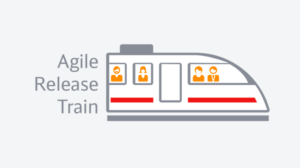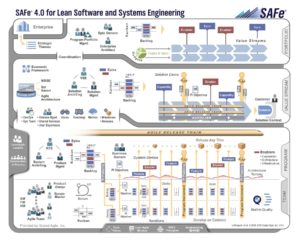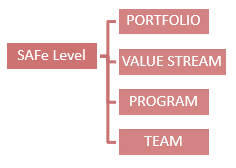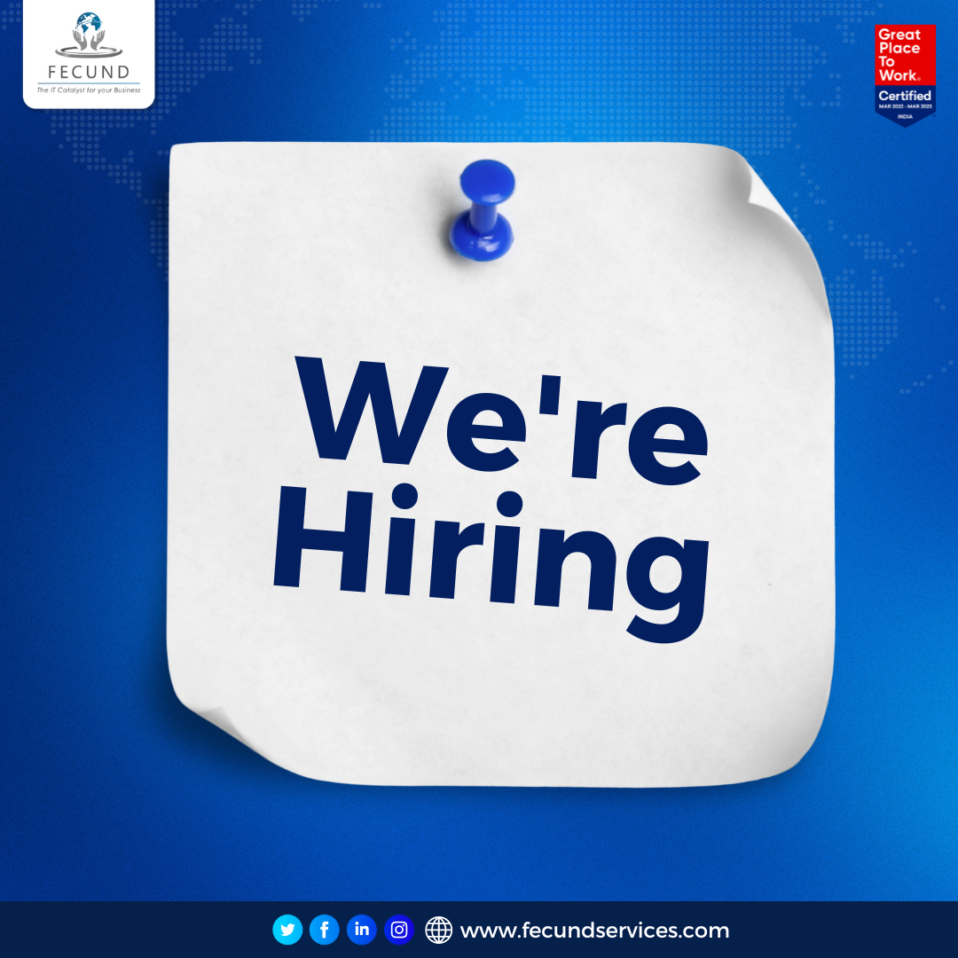The Scaled Agile Framework (SAFe)
The Scaled Agile Framework (SAFe®) helps businesses address the significant challenges of developing and delivering enterprise-class software and systems in the shortest sustainable lead time. It is a freely revealed, online knowledge base of proven success patterns, for people building the world’s most important software and systems. SAFe synchronizes alignment, collaboration, and delivery for multiple Agile teams. Scalable and configurable, SAFe allows each organization to adapt it to its own business needs. It supports smaller-scale solutions employing 50 – 125 practitioners, as well as complex systems that require thousands of people. An extensive body of knowledge, SAFe describes the roles, responsibilities, artifacts, and activities necessary to implement Lean-Agile development. The SAFe website features an interactive ‘Big Picture’ graphic, which is a visual overview of the Framework and is the primary user interface to the knowledge base. Each icon of the image is clickable, offering access to an article on that topic, as well as links to related information.
Agile is a very popular project management methodology that is being used by companies all over the world. The general method of implementing Agile methodology was to create small teams and let them divided the large task into smaller components and start working on it. This approach works well at the enterprise level. Over the years, many experts were closely watching and analyzing these techniques. They made a list of what are the practices that worked and what didn’t. The experts developed various frameworks to suit the various needs of organisations. This is what led to the invention of the scaled Agile framework.
This framework is slowly gaining popularity and companies are taking notice of its pros and cons. It is the management team’s responsibility to choose the best practice in order to have a clear idea about the ROI (Return on Investment) and how improvements can be made in the processes. Therefore, once a company decides to adopt Agile techniques, a general option is not available. There are various methodologies and frameworks. The company needs to identify the one that suits their work culture and mode of business the best and adopts it. The framework should be selected after thoroughly weighing the pros and cons.
The Scaled Agile Framework was invented by Dean Leffinwell and has the following main features:
1) Easy to implement –
Scaled Agile Framework (SAFe) has a complex structure and is basically used by large companies when they want to adopt the Agile framework. It is basically the go-to option for large software teams that are inter-dependent. An organization can easily switch to SAFe by following the tons of articles, videos, and tutorials online. The only problem a few senior management officials tend to face is that they implement all the components of SAFe without truly understanding its actual usage. This tends to add more complexity to the processes.
2) Different levels of SAFe –
VersionOne helps you implement SAFe in the following ways
- Team Level: It is necessary to keep each member of the team motivated and allow them to work with ease. The most important component of an Agile system is the team members following it. VersionOne provides a particular system through which multiple teams can work together with ease. This approach can be applied to the teams working on ScrumXP or Kanban. Through VersionOne, the teams can collaborate smoothly and deliver the software with ease.
- Value Stream Level:This is one of the optional levels and adopted by companies only when they have huge, complex systems that contains multiple Agile release trains. Using SAFe’s Value Stream level, the teams can plan, track, and deliver the most complex systems with ease.
- Portfolio Level:This is considered as the basic level where all the planning and strategies are discussed. In this level, the decisions for value stream level funding are made.
- Program Level:At this level, SAFe focusses on how the Agile teams are integrated in order to create better customer value. To do this, VersionOne enables you to track your program increments and also coordinate all the activities of your release train.
3) The concept of release trains –
A release team is a team consisting of a large group of employees usually consisting of 50-125 of them. It can be compared to an actual train as it runs on a pre-fixed schedule. This schedule can be flexible though and the timings can be decided by the members of the team. It is advised that the team members working on a particular release train should be completely focused on that particular train and not worry about the reporting structure. A release train usually consists of a long-term which will have many teams and projects within it.

4) Various certifications – There are six scaled Agile framework certifications available based on your role in the SAFe team. They are:
1) SAFe Program Consultant Certification (SPC4) – This certification is meant for Agile change agents and external consultants in order to help them adopt SAFe and launch Agile release trains.
2) SAFe Agilist (SA) – This is meant for executives, managers and Agile change agents so that they can easily adopt SAFe methodology.
3) SAFe Practitioner (SP) – It is meant for project managers, product managers, software developers and testers. It will help them easily adopt the framework on a team and program levels.
4) SAFe Program Consultant Trainer 4.0 (SPCT4) – This certification is suitable for Scaled Agile Gold Partners so as to enable them to train and certify SAFe program consultants and grow their community.
5) SAFe Product Manager/Product Owner (SPMPO) – It is meant for business owners, product owners, product managers, program managers, and business analysts. This certification will enable them to carry out better product development flow and scrum team delivery.

Different Levels in SAFE
There are two different types of SAFe implementation:
- SAFe 4.0 implementation
- SAFe 3.0 implementation

- In SAFe 4.0 implementation we have 4-Levels: Portfolio, Value Stream, Program, and Team.
- In SAFe 3.0 implementation we have 3-Levels: Portfolio, Program, and Team
- 3-Level SAFe is for smaller implementations with 100 or less people. Programs that do not require significant collaboration.
- 4-Level SAFe is for solutions that typically require many hundreds of practitioners to develop deploy and maintain software.
Team Level
| Roles/Teams | Events | Artifacts | ||
| * Agile Team | * Sprint Planning | * Team Backlog | ||
| * Product Owner | * Backlog Grooming | * Non-Functional Requirements | ||
| * Scrum Master | * Daily Stand-Up | * Team PI Objectives | ||
| * Execution | * Iterations | |||
| * Sprint Demo | * Stories(Working Software) | |||
| * Sprint Retrospective | * Sprint Goals | |||
| * IP Sprints | * Built-In Quality | |||
| * Spikes | ||||
| * Team Kanban |
- All SAFe teams are part of one or other Agile Release Train (ART).
- SAFe teams are empowered, self-organizing, self-managing, cross-functional teams
- Each team is equally responsible for defining, building and testing stories from their Team Backlog in a fixed-length Iterations
- Teams plan and execute two-week time-boxed iterations in accordance with agreed-to Iteration Goals.
- Teams will use ScrumXP/Team Kanban routine to deliver high-quality systems to produce a System Demo on every two weeks.
- All different teams in the ART (Agile Release Trains) will create an integrated and tested system. Stakeholders will evaluate and respond with fast feedback
- They apply Built-in Quality practices.
- Each ScrumXP team will have 5-9 team members, which includes all the roles necessary to build a quality incremental value in each Iteration.
- ScrumXP roles includes:
- Team(Dev+QA)
- Scrum Master
- Product Owner. Etc..
- SAFe divides the development timeline into a set of iterations within a PI (Program Increment).
- PI duration is between 8 -12 weeks.
- The team will use stories to deliver the value. The Product Owner will have content authority over their creation and acceptance of the stories.
- Stories contain Customer’s requirements.
- Team Backlog includes user and enabler stories, which are identified during PI planning. When the Product Management presents the Roadmap, Vision, and Program Backlog.
- Identifying, elaborating, prioritizing, scheduling, implementing, testing, and accepting the stories are the primary requirements of management work in team level.
- Each iteration provides:
- Valuable increment of new functionality
- Accomplish via constantly repeating pattern
- Plan the iteration
- Commit to some functionality
- Execute the iteration by building and testing Stories
- Demo the new functionality
- Retrospective
- Repeat for the next iteration
- Teams also support the System Demo at the end of each Iteration. which is the critical integration point for the ART.
- Larger Value Streams will have multiple ARTs.
- The Innovation and Planning (IP) Iterations leverage the teams with an opportunity for innovation and exploration.
Program Level
| Roles/Teams | Events | Artefacts | ||
| * DevOps | * PI(Program Increment) Planning | * Vision | ||
| * System Team | * System Demos | * Roadmap | ||
| * Release Management | * Inspect and Adopt Workshop | * Metrics | ||
| * Product Management | * Architectural Runway | * Milestones | ||
| * UEX Architect | * Release Any Time | * Releases | ||
| * Release Train Engineer(RTE) | * Agile Release Train | * Program Epics | ||
| * System Architect/Engineer | * Release | * Program Kanban | ||
| * Business Owners | * Program Backlog | |||
| * Lean-Agile Leaders | * Non-Functional Requirements | |||
| * Communities of Practice | * Weighted Shortest Job First (WSJF) | |||
| * Shared Services | * Program PI Objectives | |||
| * Customer | * Feature | |||
| * Enabler | ||||
| * Solution | ||||
| * Value Stream Coordination |
- In Program level, Value of SAFe is delivered by long-lived Agile Release Trains (ART). Iteration is for team and train is for the program.
- Agile Release Trains (ART) is the primary vehicle for value delivery at the program level. It delivers a value stream to the organization.
- The Program Increments (PIs) duration is of 8 to 12 weeks.
- ART is of 5 – 12 Agile Teams (~50 – 125+ people) which includes all the roles and infrastructure needed to deliver fully tested, working, system-level software.
- Each PI is a multiple-Iteration time box. During which a significant, valuable increment of the system is developed and delivered.
- In each PI a “demo” and “Inspect and adapt” sessions will happen, and Planning begins for the next PSI.
- At the Program level, SAFe emphasis on the principle of alignment. This is because multiple agile team efforts are integrated to create customer value.
- SAFe artifact hierarchy is: Epics->features->user stories.
- At Program level, Product Manager/Program Manager has content authority. He defines and prioritizes the program backlog.
- Program backlog is a prioritized list of features.
- At the program level, features can be originated, or they can derive from epics defined at the portfolio level.
- Features decompose to user stories and flow into team-level backlogs.
- Product Manager or the Release Train Engineer role could be handled by Program Manager/Senior Project Manager
- System Architect role at the program level is to collaborate day to day work with the teams. It ensures that non-functional requirements are met. Also, they work with the enterprise architect at the portfolio level to make sure there is sufficient architectural runway to support upcoming user and business needs.
- Interface design, user experience guidelines and design elements for the teams are provided by UX Designers.
- Chief-Scrum Master role is played by ‘Release Train Engineer’.
- Various team (from marketing, development, quality, operations and deployment) forms ‘Release Management Team’. They will approve routine releases of quality solutions to customers.
- Deployment of software into customer environments and successful delivery is taken care by DevOps team.
Portfolio Level
| Roles/Teams | Events | Artifacts | ||
| * Enterprise Architect | * Strategic Investment Planning | * Strategic Themes | ||
| * Program Portfolio Mgmt | * Kanban Portfolio(Epic) Planning | * Enterprise | ||
| * Epic Owners | * Portfolio Backlog | |||
| * Portfolio Kanban | ||||
| * Non-Functional Requirements | ||||
| * Epic and Enabler | ||||
| * Value Stream | ||||
| * Budgets(CapEX and OpEx) |
- Highest level of interest/ concern /involvement/ in SAFe is SAFe Portfolio
- The portfolio provides the basic blocks for organizing the Lean-Agile Enterprise flow of value via one or more Value Streams.
- The portfolio helps to develop systems and solutions which are described in strategic themes (links a SAFe portfolio to the changing business strategy of an enterprise).
- To meet strategic objectives, portfolio level encapsulates these elements. It provides the basic budgeting and other governance mechanisms. This way it assures that the investment in the value streams provides the returns necessary for the enterprise.
- Portfolio is connected to business bi-directionally:
- In order to guide the Portfolio to the larger changing business objectives, it provides strategic themes.
- Another direction indicates the constant flow of portfolio values.
- Program Portfolio Management acts as stakeholders, and they are accountable to deliver the business results.
- SAFe Portfolio Level contains: people , processes and necessary build systems and solutions that enterprise needs to meet its strategic objectives.
- Value Streams are the primary objectives in Portfolio, with which funding for the people and other resources required to build the Solutions.
- Important key concepts used here are:
- Connection to the Enterprise,
- Program Portfolio Management,
- Managing the Flow of Portfolio Epics.
Value Stream Level
| Roles/Teams | Events | Artifacts | ||
| * DevOps | * Pre and Post PI(Program Increment) Planning | * Vision | ||
| * System Team | * Solution Demos | * Roadmap | ||
| * Release Management | * Inspect and Adopt Workshop | * Metrics | ||
| * Solution Management | * Agile Release Train | * Milestones | ||
| * UEX Architect | * Releases | |||
| * Value Stream Engineer(RTE) | *Value Stream Epics | |||
| * Solution Architect/Engineer | * Value Stream Kanban | |||
| * Shared Services | * Value Stream Backlog | |||
| * Customer | * Non-Functional Requirements | |||
| * Supplier | * Weighted Shortest Job First (WSJF) | |||
| * Value Stream PI Objectives | ||||
| * Capability | ||||
| * Enabler | ||||
| * Solution Context | ||||
| * Value Stream Coordination | ||||
| * Economic Framework | ||||
| * Solution Intent | ||||
| * MBSE | ||||
| * Set Based | ||||
| * Agile Architecture |
- The Value Stream Level is optional in SAFe.
- Value Stream Level is new in SAFe 4.0.
- The Value Stream Level is intended/designed for Enterprises /builders/organization who are:
- Large in size
- Independent
- Have complex solutions
- Their solutions typically require multiple ARTs
- They have Suppliers contribution.
- They face the largest systems challenges
- For cyber-physical systems
- For software, hardware, electrical and electronic, optics, mechanics, fluidics and more.
- Building this kind of systems often takes hundreds, even thousands of practitioners, external and internal suppliers.
- If the systems are mission crucial. Failure of the Solution, or even a subsystem, has unacceptable economic and social consequences.
- If the Enterprises can be built with a few hundred practitioners, it may not need the constructs of this level. In that case, they can use from the ‘collapsed view’ which is 3-level SAFe.
- Building value stream solutions in a Lean-Agile pattern requires additional artifacts, coordination, and constructs. So this level contains an Economic Framework to provide financial boundaries for Value Stream
- It supports cadence and synchronization for multiple ARTs and Suppliers. It includes Pre-and Post-PI Planning meetings and Solution Demo.
- It gives additional roles which are: Value Stream Engineer, Solution Architect/Engineering, and Solution Management.
Summary:
- SAFe is an industry-proven, value-focused method for scaling Agile at the Enterprise level.
- It answers the questions like “How do we plan?”, “How do we budget?”, and “How do we become cross-functional in architecture and DevOps?”
- SAFe helps large organization teams to meet organization’s strategic goals, not just individual project goals.
- The framework offers the ability to maintain and create a centralized strategy to deliver value.
- The SAFe model has three/four levels that centralize the strategic themes of an organization.
- Centralized strategy, combined with the de-centralized agile development execution.





Post a comment